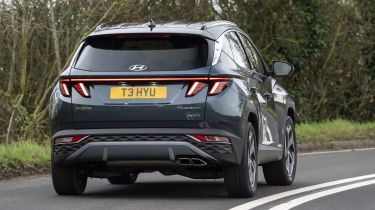Hyundai Tucson Hybrid review: MPG & CO2 emissions
The hybrid Tucson does reasonably well here, but for the best figures (and lowest company-car tax) you're better off with the plug-in version
| Fuel economy (combined) | Fuel economy (high) | Fuel economy (low) | CO2 emissions |
|---|---|---|---|
| 50mpg | 58-59mpg | 48-50 | 127-131g/km |
The Tucson is a large and spacious family SUV – a type of vehicle not traditionally associated with the very best fuel-economy and CO2 emissions figures. But its petrol-electric drivetrain is an impressive effort and it does a good job of minimising use of the engine, especially when you're cruising along.
Those looking for the lowest possible CO2 numbers – company-car drivers, for example – are best advised to check out the plug-in hybrid Tucson, although if lack of access to a charging point at home or work is a problem for you, the regular hybrid is still an efficient way to get around, particularly if you do a lot of short urban journeys.
The Tucson is not a small car. At 4.5 metres, it’s longer than a Volkswagen Tiguan and only just shy of the Toyota RAV4 – an obvious rival also offered with hybrid power. But around town, you should find a figure north of 45mpg quite achievable. And in truth, this figure is only likely to take a really major hit if you go beyond fast motorway running and actually start mashing the right-hand pedal for every bit of acceleration.
Hyundai Tucson Hybrid MPG & CO2 emissions
Hyundai claims official fuel economy of circa 50mpg for the hybrid Tucson, along with CO2 emissions just above or below 130g/km, with minor variations due to wheel size or trim level. These are impressive numbers for a big, essentially petrol-engined SUV, and we found around 45mpg to be easily achievable in low-speed urban driving during our time with the car. More impressive numbers can be achieved by the plug-in hybrid variant (as long as you plug it in regularly), which promises sub-50g/km CO2 emissions for ultra-low company-car tax.

